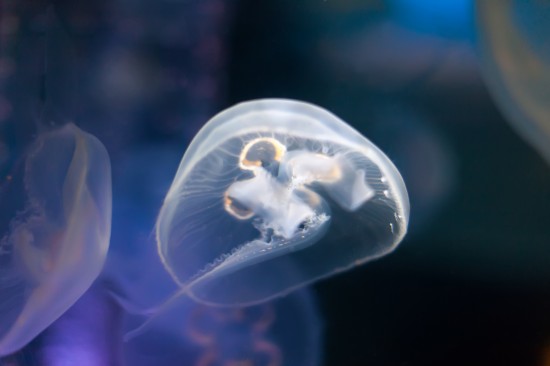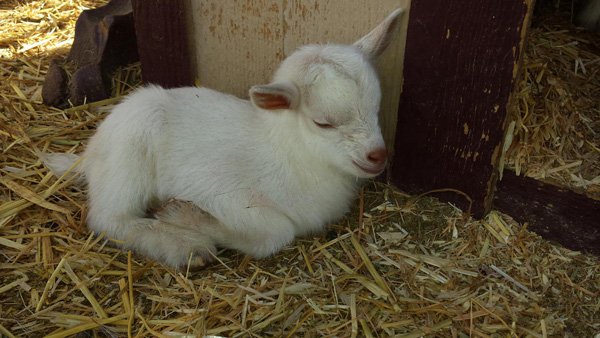

The jellyfish is a marine invertebrate that is brainless, stomach-less and has no eyes, and its closest relatives are actually plankton and corals rather than other fish.
For such a basic life form, the jellyfish is one of the more interesting aquatic animals to watch and keep, and while they are more challenging to keep than many other forms of marine life, it is entirely possible to keep them as pets, providing that you can create and maintain an appropriate environment for them. The jellyfish should not be kept in a regular tank with other forms of marine life unless you have an incredibly large set-up, and you will in fact need to buy or make a specially shaped tank to suit your jellyfish!
In this article, we will look at some of the basic requirements of keeping jellyfish to get you started. This article will not prove sufficient research to give you everything that you need to plan and keep your tank, but it should give you a good indication of whether or not the idea is viable for you. Read on to learn more!
While most tanks are of course square or rectangular, this shape of tank does not work for jellyfish as they can become trapped in the right-angled corners, and so a cylindrically shaped tank is your best bet in order to avoid this happening.
How you enable filtration and a good flow of water is also very important, as jellyfish can easily become sucked into or trapped against filtration equipment and pumps! Setting up an appropriate flow of water around the tank is essential, as many species of jellyfish need to float on the current in order to move around and find food, and to dispose of waste products.
There are masses of different species of jellyfish worldwide, and not all of these are well suited to life in even a very well set up tank! While there are several options available to you in terms of finding a good fit, one of the best jellyfish species for the first time keeper is the Moon Jellyfish (Aurelia aurita) which lives in the wild in temperate, tropical climates in peaceful, gentle waters such as harbours and bays. They grow up to around 30cm in diameter, and generally reproduce happily in captivity within the right environments.
Some jellyfish species dwell in rather cooler waters than the average tropical fish, and the challenge with keeping jellyfish often comes from keeping the water cool enough, rather than warm enough! A temperature range of 12-18 degrees Celsius is required for some species, which is often slightly cooler than room temperature, and so may mean that you will need to provide a means of cooing the tank water.
Like all marine life forms, the filtration for your jellyfish tank needs to be spot-on, and these requirements are much more complex than you would find in a non-marine tropical tank. Excellent water quality is a must, and this means a superior filtration system is needed! Ammonia levels must be kept to an absolute bare minimum, biological filtration should be excellent, and both a surface and a protein skimmer should be used as well. Mechanical filtration to remove solid waste products is necessary too.
Feeding jellyfish can prove challenging, largely due to the sheer volume of food that they consume! In the wild, jellyfish eat plankton and lots of it, as well as baby brine shrimp. These things can usually be bought from larger marine aquarium retailers, but you will likely decide that it is easier to set up your own colonies of plankton and brine shrimp breeding tanks at home, to fulfil your jellyfish’s insatiable appetites! One big mistake that first time jellyfish keepers often make is overlooking how much food jellyfish need, and how often they should be fed.
Jellyfish need to have relatively strong, bright tank lighting to thrive, and to allow the algae that will form part of their diet to photosynthesise effectively. Make sure that you dedicate a reasonable budget to lighting the tank properly, and take advice from your specialist aquatic retailer when picking the light types and fittings for your tank.
Every year, more people are harmed by the sting of a jellyfish when swimming than are harmed by sharks, and it is certainly fair to say that coming into contact with the jellyfish’s sting is something to actively avoid! The moon jellyfish is one of the milder of the jellyfish species in terms of sting, but you will still feel it if they get you, and as with any sting, you might find that it can trigger an allergic reaction that can be painful or even dangerous.
Keep your hands out of the tank other than when absolutely necessary, and wear disposable gloves to protect your hands when working in the tank!
 Turmeric for horses everything you need to know
Turmeric for horses everything you need to know
Turmeric for horses everything you need to know
Turmeric for horses everything you need to know
 Ultra-typing Or Over-typing In Cats And Dogs
Ultra-typing Or O
Ultra-typing Or Over-typing In Cats And Dogs
Ultra-typing Or O
 Comfortable Chicken Houses Keeps your Chickens Healthy, Wealthy, Wise
Comfortable Chicken Houses Keeps your Chickens Healthy, We
Comfortable Chicken Houses Keeps your Chickens Healthy, Wealthy, Wise
Comfortable Chicken Houses Keeps your Chickens Healthy, We
 My Bones And Biscuits, Favorite Dog Treat Recipe
My blog topics are varied and I tend you be opinioned, e
My Bones And Biscuits, Favorite Dog Treat Recipe
My blog topics are varied and I tend you be opinioned, e
 Cat Colour Genetics
Cat Colour Geneti
Cat Colour Genetics
Cat Colour Geneti
Copyright © 2005-2016 Pet Information All Rights Reserved
Contact us: www162date@outlook.com